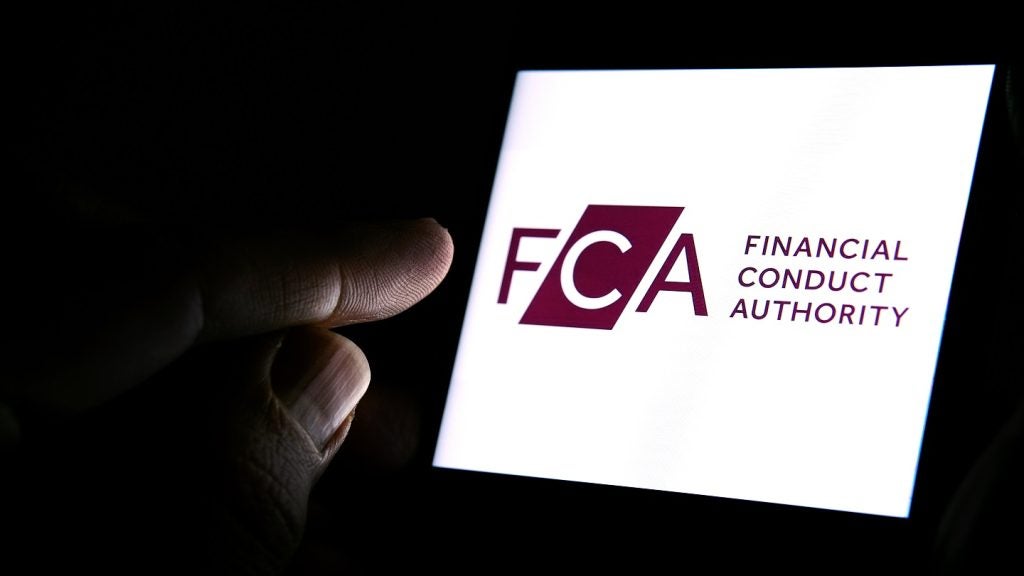
Paul Bennett, sales and marketing director at CRM technology providers Chrysalis-Solmotive, tells Richard Brown how the birth and international crossover of PCP has influenced his approach to customer renewal
"This is not a one-man journey," says Paul Bennett, who stresses the work of business partner Jolyon Barker in piloting the company
from their kitchen tables to multinational boardrooms in eight years.
Between Bennett, the sales and marketing director, and Barker, managing director, Chrysalis-Solmotive now innovate and supply
retention and renewal technology services to manufacturers, financiers and dealer groups from their head office in Oldbury and operations office in Stourbridge, both in the West Midlands.
Aside from Barker, who Bennett calls the "engine room behind the product", and the 18 members of staff at the company, however,
the journey for Bennett involves the evolution of PCP, a finance product that has sold to countless millions on both sides of the Atlantic and in which Bennett is "an absolute believer".
Yet it is a product which, for Bennett, often fails to reach its potential. By his numbers, 72% of PCP customers in the UK never enter the final third of their original contract.
Bennett wants to change this and knows that to do so will mandate a change of outlook on the forecourt.
How well do you really know your competitors?
Access the most comprehensive Company Profiles on the market, powered by GlobalData. Save hours of research. Gain competitive edge.

Thank you!
Your download email will arrive shortly
Not ready to buy yet? Download a free sample
We are confident about the unique quality of our Company Profiles. However, we want you to make the most beneficial decision for your business, so we offer a free sample that you can download by submitting the below form
By GlobalData"Starting with the end in mind, the point of sale should be the point of resale," he says, with adamant experience of a career which has grown alongside PCP.
"More importantly, PCP, which is misunderstood by the guy or girl in the showroom, is the mechanism for retention and renewal,
not just for a lower monthly payment.
"PCP has not been ‘sold’ until the customer has renewed."
Richard Brown: Your car sales career began outside the UK, what did you learn from that?
Paul Bennett: I ‘ve always worked in the prestige sector, a lot of my career with the BMW network. I spent time in 1989 within
the BMW network in Johannesburg. I started getting a lot of interest in financial services, as well as retail automotive.
I went to the US in 1993, again, involved in the BMW network in New York and Los Angeles. I went from sales person to business
manager to general sales manager to dealer principal. I was running a BMW business in Los Angeles. We ran a floor of 20salespeople and four business managers, and turned over about 300 units a month.
It was a sharp, fast, results-driven environment. From that, in my role as dealer principal, I started looking into how we could really make our whole approach to finance and renewal much more effective.
In the US market, PCP is known as a closed-end leasing contract. What happened in the US, in the ’80s, predominantly, was a lot of what we called open-ended leasing. The customer took responsibility for repaying the final payment.
It got a bad reputation because this was a way for car brokers to make a lot of money. They misrepresented the product and they stitched up customers with a car, generally, worth considerably less than the end payment. Then the manufacturers came along and
said leasing was definitely the way, but needed to take away the risk from the consumer, hence the closed-end leasing product.
Captive finance companies – particularly, from my experience, BMW Financial Services North America – became heavily focused toward promoting, subventing, and making the affordability factor clear to the consumer. The easiest way was through a closed-end lease.
You can demonstrate to most American people not to look at car ownership, but to look at driving a car as a utility payment. It was used as a shift in consumer thinking to say: "don’t worry about final ownership of a depreciating asset, look at your car usage as a utility".
However, the attitude of the UK buyer is a little more conservative. The introduction of what we know as PCP was a slower burn. That was introduced most-effectively by Ford Motor Company and Ford Credit with the introduction of their Options programme in the US in the mid-80s, and in the UK in 1992.
It wasn’t just introduced in the UK, but in 22 countries. A very bold move, but one that has paid huge dividends for Ford and, today, every manufacturer in the UK leads with PCP offers to the retail consumer.
It’s a standard approach toward marketing a vehicle because they can control the residual value more accurately, they can subvent it. their vehicle can be tailored toward the financial ability of the consumer.
Brown: What did you learn from the transition to PCP in the UK?
Bennett: PCP was a slick and elegant finance tool but, most importantly, this was the key to the retention of the customer. If you have a renewal process in place that complements the initial PCP sell-through, you should create customers for life.
Once you’ve sold it you’ve got a chance of being able to sell to that customer again and again. I embraced the whole concept of selling affordability on our PCP and also selling to the customer, in many cases, the lowest cost of driving. They were never going to
owe more than the car was worth and they would also, if used correctly, never be in a position where they have a vehicle requiring
MOTs, with problems of increased service, maintenance and repair.
That was an education. It’s still an education for consumers to understand the benefits of PCP.
General Motors had a product they branded Choices, but GMAC never truly got behind the concept and preferred more conventional low-rate hire purchase.
I joined a company called Half A Car, the founders of which were the chief designers of the closed-end leasing process. In principle, Half A Car sowed the seed within Ford Credit to implement Ford Options across 22 countries.
The early adopters, Peugeot Passport and Renault Selections, did exceptionally well. Then you had the German brands. Nissan
have one called Preferences. They all saw the benefit.
Fast-forwarding, every manufacturer in the UK understands the importance of having subvented, well-designed PCP to drive retention and sales in a crowded, complex market.
I was part of a group that conducted a Hyundai roadshow from Scotland down to Bristol in the last few months. My section was all about educating the dealers on the value and importance of leading with PCP in the UK. Hyundai are squarely behind PCP as the way to future sales for the UK.
Brown: When you came back, what was the big difference in the understanding of finance?
Bennett: A much more disposable and laissez-faire attitude toward spending in the US. That has been an education; to fully propose to customers a better and more modern approach than traditional hire purchase.
Importantly, the Chrysalis-Solmotive approach is not conventional. We believe reducing debt is vital for a healthy society.
Albeit a small company, we approach our corporate and social responsibility very dearly.
We’re in a finance industry, but we want consumers to see the benefit of reducing their exposure to long-term finance: 48- and 60-month HP finance agreements are the norm. We want to educate a customer through the understanding of what a PCP can provide for them. Don’t expose yourself to all the horrors of repair, plus the exposure to used car values that goes with that.
For example, a 24-month payment plan can, in many cases, provide customers with a payment they can afford plus flexibility at the end and allow a better decision regarding how you pay for your motoring.
We have a very strong ethos that it’s not all about hanging customers out to dry and maximising revenues and incomes in the short term. Our thinking is about helping retailers, their brand partners and captive financiers enhance customer satisfaction that directly boosts loyalty via early repurchase.
We’re not naïve, we’re very commercial but also trying to reduce the burden of debt in society, because the relationship is for the long-term. Normally, when you take advantage of a person, you can only do it once.
Brown: How did Chrysalis-Solmotive get started? How did the evolution of PCP shape your marketing of a CRM product?
Bennett: Joe Barker and I both applied for a role at Half A Car Europe, shortlisted for the same position. The European managing director decided he’d hire us both. Joe has had an extensive career in automotive retail.
He’s spent most of his career, unlike me, in the UK market , employed in large automotive PLCs. Bristol Street was where he spent most of his years.
We had seen the most fantastic introduction of PCP and performance through our experiences at Half A Car and Ford. Half A Car did have a renewal and retention process. Obviously, back in the day, it was a manual and labour-intensive, paper-based approach. The principles were sound, but because it was so hard to implement it effectively, most dealers didn’t come on board as strongly as they could. There were some but we’d just had the 2000 Stephen Byers "Rip Off Britain" debacle. The renewal and retention mechanism we had implemented allowed those dealers who fully embraced the programme to weather the storm.
Around 2003, Joe and I decided we would marry high-quality, original thinking and processes to modern technology and create a globally-scalable application that would have immediate value in mature automotive markets and provide the building blocks for manufacturers to ensure retention in emerging markets.
This is where I defer to Joe. I’m front-of-house sales and marketing, Joe is strategyand product design-led. Joe crafted, designed and owns the intellectual property that is Chrysalis. He continues to be the leading light on future iterations, modules and development.
Midway through 2004 the company was incorporated. We had a consultancy contract with Toyota Motor Europe which we delivered for about a year to give us sufficient funding to design and build a prototype of what is Chrysalis today. Late 2006, early 2007, we went to the market in a crude but typical start-up fashion, working from our respective kitchen tables and, leveraging contacts and experiences, created our first group of interested customers – regional dealer groups – who we sold our services to. It developed into
meaningful relationships with a number of UK captive finance companies and brand partners. Work with them enabled us to take our renewal technology products into global markets.
We have a significant presence in Australia, an opportunity across Asia-Pacific with the support of a captive finance company and its national sales companies, a business venture and partner in Canada, and business revenue out of Belgium, Spain and Italy. We are realising our global footprint and we’re still very much at the start.
The coming three years have got meaningful forecasts for growth and opportunity in a number of those markets.
Wherever I had been, I have never seen a truly joined-up approach with the manufacturer, the captive financier, into driving a channelled approach to retention and renewal.
It’s true even to this day in some cases: Go to a dealer. You buy dealer funding. The contract papers are taken to the admin department. The admin assistant closes the file once the payment has been received. Ultimately, your file will find itself in an archive which, when it’s full, ends up on the highest shelf of the parts department, never to be touched again. And the dealership relies, not in all cases because there are some excellent dealers in all countries, wholly on the manufacturer advising that dealership that the customer has got five or six months to run on a finance contract and it would be advisable to get them back in the dealership.
We need to have a much smarter, tighter approach to when we make customer contact.
We must make sure we have accurate information accessible to drill into and manipulate as per market conditions today.
If you’re sitting in an archive box and the protocol is the manufacturer and / or the finance company will advise the dealer once you enter the final few laps of ownership, then that approach is not sophisticated enough to allow the flexibility and visibility required in a cut-throat environment.
We need to apply trading criteria today to see if we can resolicit customers for purchase now, rather than waiting for the last five months when we know two-thirds will not have remained with us, the brand, or the finance company.
It’s about access to near real-time information; the intelligent use of a user interface that pulls together disparate pieces of information. That is a start.
But where the rubber meets the road is: the ability of the operator to manipulate that data effectively, coupled with a simple but robust process in-dealer around usage of our technology, backed by support who roll up their sleeves and work with the dealer one-on-one to maximise performance while promoting best practice.







